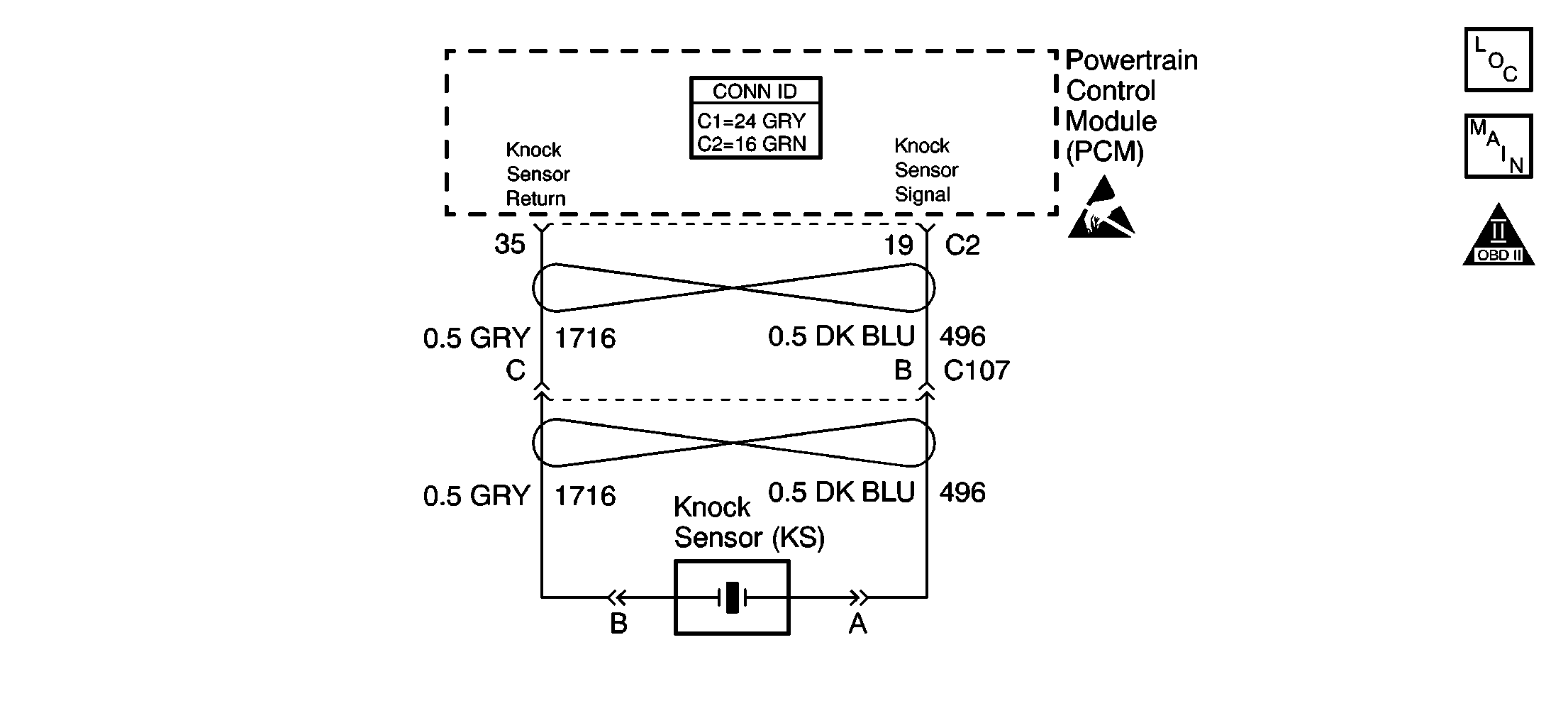
Circuit Description
The PCM uses a knock sensor (KS) to detect engine detonation (spark knock). The knock sensor produces an AC signal at all engine speeds, and loads. The PCM makes adjustments to the spark timing based on the amplitude and frequency of the KS signal.
A knock sensor module is no longer used to diagnose the knock sensor system. The circuitry is integrated into the PCM. The PCM uses the knock sensor to determine the amount of normal engine noise (noise channel) for a wide range of engine speeds and loads. The PCM compares the actual knock sensor signal to the learned noise channel. When the PCM detects a knock, the PCM will retard the spark timing until the knock goes away. If the knock is such that the vehicle operates on large amounts of spark retard, and the PCM is unable to eliminate the knock, DTC P0326 will set.
Conditions for Running the DTC
| • | Engine speed is more than 600 RPM. |
| • | The knock detection is enabled. |
Conditions for Setting the DTC
| • | The KS signal indicates an engine knock is present. |
| • | The PCM commanded spark retard at a given engine load and speed is more than the calibrated value. |
| • | The condition is present for at least 3.5 seconds. |
Action Taken When the DTC Sets
| • | The PCM will not illuminate the malfunction indicator lamp (MIL). |
| • | The PCM will store the conditions present when the DTC set as Fail Records data. |
Conditions for Clearing the MIL/DTC
| • | The history DTC will clear after 40 consecutive warm-up cycles have occurred without a malfunction. |
| • | The DTC can be cleared using the scan tool Clear DTC Information function. |
Diagnostic Aids
If the conditions is intermittent, refer to Intermittent Conditions .
Step | Action | Values | Yes | No |
|---|---|---|---|---|
1 | Did you perform the Powertrain On Board Diagnostic (OBD) System Check? | -- | ||
2 |
Did you find and correct the condition? | -- | ||
3 |
Did you find and correct the condition? | -- | Go to Detonation/Spark Knock | |
4 |
Does the scan tool indicate that DTC P0326 passed? | -- | System OK |
